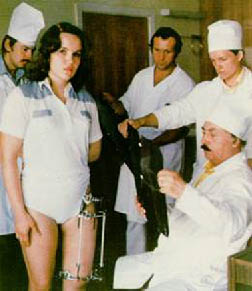"Go put your gold in the toilet."
Oil is passe. The next wars will be fought over water & food.
Waste? Not
We all produce a rich resource in our homes and then spend millions of dollars to throw it away. A new movement says there are smarter ways to think about waste.
Rebecca Tuhus-Dubrow, Boston Globe, 7/13/08J
This neglected treasure is human waste. Urine is rich in nitrogen, potassium, and phosphorus, the three main ingredients in artificial fertilizer. Feces contains these nutrients, too, in smaller doses, and the methane it produces can be harnessed as biogas, a green energy source.
Both methods - and several others between the extremes - pose problems that grow more conspicuous every day. As the developing world has grown more crowded and urban, the lack of adequate sanitation has become a public health crisis. In America and other developed countries, the system works much more smoothly, but uses enormous quantities of clean water - about 4,000 gallons per person each year - and requires massive amounts of energy and money to treat the resulting sewage.
"Some of our farmers say, 'We used to think poop was dirty, but now it's our gold,' " says Simpson-Hebert. "They won't let their children defecate in the open. They say, 'Go put your gold in the toilet.' "
Drink Up
Sewage in O.C. goes full circle
LA Times, 1/2/08
As a hedge against water shortages and population growth, Orange County has begun operating the world’s largest, most modern reclamation plant – a facility that can turn 70 million gallons of treated sewage into drinking water every day.
Basically, the facility takes treated sewage, which would have been discharged into the sea, and runs it through an advanced filtration system.
Officials say the final product is as clean as distilled water and so pure that lime has to be added to it to keep it from leaching minerals out of concrete pipes, thus weakening them.
Officials say the reclamation process uses less electricity than moving the same amount water to Orange County through the state’s system of aqueducts. The California State Water Project consumes about a fifth of the energy used in the state.


0 Comments:
Post a Comment
<< Home